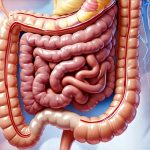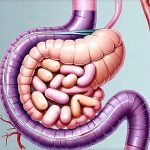Allergic diseases have dramatically increased in prevalence over recent decades, particularly in developed countries. While genetic predisposition plays a role, it doesn’t fully explain this surge; environmental factors are clearly significant contributors. The “hygiene hypothesis” initially proposed that reduced early-life exposure to microbes led to immune dysregulation, but the picture is far more nuanced now. Increasingly, research points towards the gut microbiota – the vast community of microorganisms residing in our digestive tract – as a key player in modulating immune responses and influencing susceptibility to allergies. This complex ecosystem isn’t just passively present; it actively participates in metabolic processes that can directly impact allergic reactions, specifically through its role in histamine metabolism.
The intricate relationship between gut health, immunity, and allergy development is becoming increasingly understood. Histamine, a potent biogenic amine involved in numerous physiological functions, is central to the allergic cascade. While mast cells release histamine during an allergic reaction causing familiar symptoms like itching, swelling, and sneezing, it’s also produced and degraded within the gut itself. The composition of the gut microbiota profoundly influences this delicate balance between histamine production and breakdown, ultimately affecting systemic histamine levels and influencing allergy risk. A dysbiotic gut—one with an imbalanced microbial community—can contribute to increased histamine production or impaired degradation, potentially exacerbating allergic responses.
Histamine Metabolism: An Overview
Histamine isn’t simply a culprit in allergies; it’s essential for life. It functions as a neurotransmitter, regulating sleep-wake cycles and appetite, and plays a crucial role in gastric acid secretion for digestion. However, excess histamine can trigger unwanted inflammatory responses. The body has several mechanisms to control histamine levels:
- Histidine Decarboxylase (HDC): This enzyme converts histidine (an amino acid) into histamine.
- Histamine N-Methyltransferase (HNMT): Primarily found in the liver and gut, HNMT is responsible for the methylation of histamine, effectively inactivating it.
- Diamine Oxidase (DAO): Located mainly in the small intestine, DAO breaks down ingested histamine from food sources.
Dysfunction in any of these pathways can lead to histamine intolerance or contribute to allergic symptoms. Importantly, gut bacteria directly influence both HDC activity (potentially increasing histamine production) and DAO expression (affecting histamine breakdown). Certain bacterial species can even produce histamine themselves, adding to the complexity.
The interplay between dietary histamine intake, intestinal permeability (“leaky gut”), microbial metabolism, and enzymatic function determines an individual’s overall histamine burden. A healthy gut microbiome contributes to efficient histamine degradation and prevents excessive systemic levels, while a disrupted microbiome can exacerbate histamine-related issues. Maintaining this balance is crucial for immune regulation and reducing allergy susceptibility. Understanding the role of gut pH in these processes can also be helpful.
The Gut Microbiota’s Influence on Histamine Levels
The connection between the gut microbiota and histamine metabolism is multifaceted. Certain bacterial species are known to possess genes encoding enzymes involved in histamine production, such as histidine decarboxylase. For example, strains of Escherichia coli and Klebsiella pneumoniae, commonly found in the gut, can produce significant amounts of histamine. Conversely, other bacteria promote histamine degradation by enhancing DAO activity or directly metabolizing histamine.
Specific bacterial genera like Lactobacillus and Bifidobacterium are associated with increased DAO expression and improved intestinal barrier function. These “beneficial” bacteria help to maintain gut integrity, reducing the passage of undigested proteins and other allergens that can trigger mast cell activation and histamine release. They also compete with histamine-producing bacteria for resources, effectively limiting histamine formation within the gut. A diverse and balanced microbiome is therefore essential for maintaining optimal histamine metabolism. Furthermore, considering gut movement impacts intestinal health can be beneficial.
Furthermore, microbial metabolites, such as short-chain fatty acids (SCFAs) produced during fiber fermentation, play a vital role in modulating immune responses. SCFAs strengthen the intestinal barrier, reduce inflammation, and influence mast cell activity—all impacting histamine levels indirectly. A diet lacking in fiber can lead to reduced SCFA production, compromising gut health and potentially increasing allergy risk. The composition of the gut microbiota is not static; it’s influenced by factors like diet, antibiotic use, stress, and genetics – all contributing to variations in histamine metabolism and allergy susceptibility. Examining gut inflammation can provide insight into these interactions.
Microbial Modulation of Immune Responses
The gut microbiome doesn’t just affect histamine directly; it profoundly shapes the immune system itself. The development of a robust immune tolerance—the ability to distinguish between harmless substances and threats—is heavily influenced by early-life microbial colonization. Microbiota exposure teaches the immune system what to ignore, reducing the likelihood of overreacting to allergens.
- Th1/Th2 Balance: A healthy gut microbiome promotes a balanced Th1/Th2 immune response. Allergies are often characterized by a skewed Th2 dominance, leading to increased IgE production (the antibody responsible for allergic reactions). Specific bacterial strains can help shift the balance towards Th1, reducing allergy risk.
- Regulatory T Cells (Tregs): Tregs suppress immune responses and prevent autoimmunity. The gut microbiota plays a critical role in inducing Treg development. SCFAs produced by beneficial bacteria are key signaling molecules that promote Treg differentiation.
- Epithelial Barrier Function: A strong intestinal barrier prevents allergens from entering the bloodstream, reducing immune activation. The microbiome reinforces this barrier through various mechanisms including SCFA production and promoting mucus layer integrity.
A dysbiotic gut can disrupt these processes, leading to impaired immune tolerance, Th2 dominance, and increased allergen sensitization. This creates a fertile ground for allergic reactions and contributes to allergy development. The relationship is bidirectional: immune responses also influence the microbiome composition, creating a dynamic feedback loop. Understanding the gut-brain axis can illuminate this complex interaction.
Dietary Interventions & Probiotics
Given the strong link between gut microbiota, histamine metabolism, and allergy susceptibility, dietary interventions aimed at improving gut health may offer therapeutic potential. A diet rich in fiber from fruits, vegetables, and whole grains provides fuel for beneficial bacteria to produce SCFAs, strengthening the intestinal barrier and modulating immune responses.
- Elimination Diets: Identifying and eliminating food sensitivities can reduce histamine load and inflammation. However, these should be done under professional guidance to avoid nutritional deficiencies.
- Fermented Foods: Incorporating fermented foods like yogurt, kefir, sauerkraut, and kimchi introduces beneficial bacteria into the gut, promoting microbial diversity.
- Low-Histamine Diets: For individuals with histamine intolerance, a temporary low-histamine diet can reduce symptoms by minimizing dietary histamine intake.
Probiotic supplementation – introducing live microorganisms to the gut – is another promising strategy. However, the effectiveness of probiotics varies greatly depending on the strain and individual. Lactobacillus rhamnosus GG and Bifidobacterium infantis have shown some promise in modulating immune responses and reducing allergy symptoms in certain studies. It’s important to choose probiotic strains supported by research and consider consulting a healthcare professional for personalized recommendations. Furthermore, gut microbiota plays a key role in overall health.
The Future of Allergy Research & Gut Health
Research into the gut-allergy connection is rapidly evolving, with exciting new avenues being explored. Metagenomics—the study of microbial genomes—is allowing us to deeply characterize the microbiome composition in allergic individuals and identify specific bacterial signatures associated with allergy risk. This knowledge will pave the way for more targeted interventions.
Furthermore, fecal microbiota transplantation (FMT) – transferring stool from a healthy donor to a recipient – is being investigated as a potential treatment for restoring gut microbial balance and alleviating allergy symptoms. While still in its early stages, FMT shows promise in resetting the immune system and improving histamine metabolism. Ultimately, understanding the complex interplay between genetics, environment, gut microbiota, and immune function will be crucial for developing effective prevention and treatment strategies for allergic diseases. The future of allergy management may well lie in harnessing the power of the gut microbiome to restore immune homeostasis and reduce inflammation. Exploring fasting and refeeding can also impact digestive balance.


















